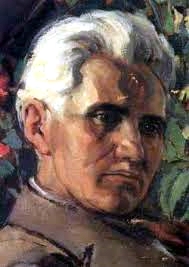Mihailo Milovanović
- Machine translation, like DeepL or Google Translate, is a useful starting point for translations, but translators must revise errors as necessary and confirm that the translation is accurate, rather than simply copy-pasting machine-translated text into the English Wikipedia.
- Do not translate text that appears unreliable or low-quality. If possible, verify the text with references provided in the foreign-language article.
- You must provide copyright attribution in the edit summary accompanying your translation by providing an interlanguage link to the source of your translation. A model attribution edit summary is
Content in this edit is translated from the existing Serbian Wikipedia article at [[:sr:Михаило Миловановић]]; see its history for attribution. - You may also add the template
{{Translated|sr|Михаило Миловановић}}to the talk page. - For more guidance, see Wikipedia:Translation.


Mihailo Milovanović (Gostinica, Serbia, 24 February 1879 – Užice, Kingdom of Yugoslavia, 28 November 1941) was a Serbian painter, sculptor and writer. He was one of the founders of the Association of Painters of Serbia (Udruženja likovnih umetnika Srbije). During the First World War, he was a war painter of the Serbian Army's Supreme Command and, as such, he painted portraits of Voivodes Radomir Putnik, Živojin Mišić, Stepa Stepanović and Petar Bojović, as well as General Pavle Jurišić Šturm, King Peter I of Serbia and Regent Alexander Karađorđević.[1]
Biography
In 1905, Mihailo Milovanović enrolled at the Academy of Fine Arts, Munich, where he studied first under the direction of Ludwig von Herterich and then Hugo von Habermann, a painter renowned for his portraits. Milovanović graduated from the academy in 1909.[2] Then, he went to the Prague Academy of Fine Arts where he found several compatriots.[3]
In 1912, Milovanović returned to Serbia when the First Balkan War broke out and joined the army as a volunteer. Other Serbian artists, including his colleagues Dragomir Glišić, Petar Ranosović, and Milan Milovanović[3] were also painting and drawing on the front lines. In 1915 he participated in the difficult Serbian army's retreat through Albania.
Mihailo Milovanović was killed in Užice at the end of November 1941 by Tito's Communist partisans who supposedly mistook him for an English spy.[4] After the Second World War and in the days of the Socialist Federal Republic of Yugoslavia, he was completely overshadowed, his name was conveniently omitted in encyclopedias devoted to art. To add insult to injury, the art authorities in Belgrade attributed most of Mihailo Milovanović paintings to Milan Milovanović instead.[5]
See also
References
- ^ Hirszfeld, Ludwik (2010). Ludwik Hirszfeld: The Story of One Life. p. 390. ISBN 9781580463386.
- ^ Keleč, Dragana (11 March 2013). "Mihailo Milovanović, zaboravljeni autor portreta srpskih vojvoda". Glas Srpske. Archived from the original on 13 February 2019. Retrieved 2 October 2018.
- ^ a b Jovanović, Miodrag; Milovanović, Mihailo (2001). Михаило Миловановић : [Албум]. Народни музеj у Беогрáду. pp. 98–100, 109. ISBN 978-8-67269-055-2.
- ^ Jovanović, Miodrag (2001). Mihailo Milovanović. ISBN 9788672690552.
- ^ "Legacy of painter Mihailo Milovanovic". Archived from the original on 2018-09-21. Retrieved 2018-10-02.
External links

- Gallery of Paintings by Mihailo Milovanović on YouTube











